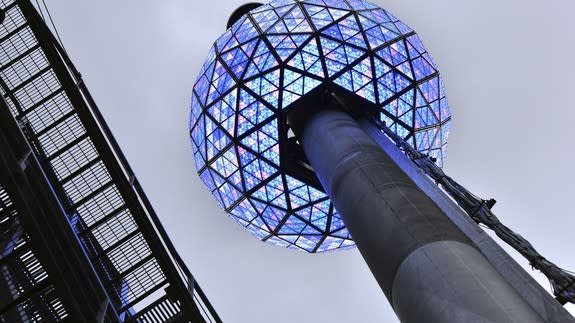2016 is the year that just won't quit. Literally.

In the nick of time, we're getting just what we needed: more of 2016.
To keep this relentless year going, we get to enjoy an extra second, known as a leap second, on Saturday Dec. 31.
The extra time is all about syncing the earth's rotation with the world's atomic clocks. Since it doesn't take a perfect 24 hours for the planet to rotate on its axis, every few years we add a leap second. The earth's rotation is actually slowing down, even if just a bit.
SEE ALSO: 2016 recut as a horror movie is actually pretty terrifying
The extra second, which was last added in June 2015, gets added onto Coordinated Universal Time (UTC) at 11:59:59 p.m. on Dec. 31. So instead of moving along to the first second of Jan. 1 we'll have 11:59:60 p.m. to celebrate this year.
For the East Coast of the U.S. it'll occur at 6:59:59 p.m. on New Year's Eve. For the West Coast it's three hours earlier.
The first leap second was added in 1972 and since then there have been 26 more leap seconds added, so this isn't coming out of nowhere to torture you. This past February also saw a Leap Day, so 2016 really is dragging on longer than most years.
Plenty of people are gearing up for the elongated year, while others have expressed their worry on social media about what havoc the extra second will bring.
Please remember to start counting down from 11 on #nye NOT 10. This will insure that people around you know you are a nerd.#leapsecond
— Carter Blunt (@ThatCarterBlunt) December 31, 2016
2016 has a leap day AND a leap second
I'm so tired— Matt Daly (@mattdaly) December 30, 2016
2016 has been extended by 1 second just to give the remaining beloved celebrities an extra second of tension.#leapsecond
— HAL 9000 (@HAL9000_) December 30, 2016
If some beloved figure from my childhood dies during the leap second at the end of 2016, I am gonna be super pissed.
— L. Ross Raszewski (@lraszewski) December 31, 2016
Saturday gains a leap second. Use it wisely.
— Andrew Perrone (@therealperrone) December 30, 2016
Enjoy the extra time. Who knows what 2017 will bring.
